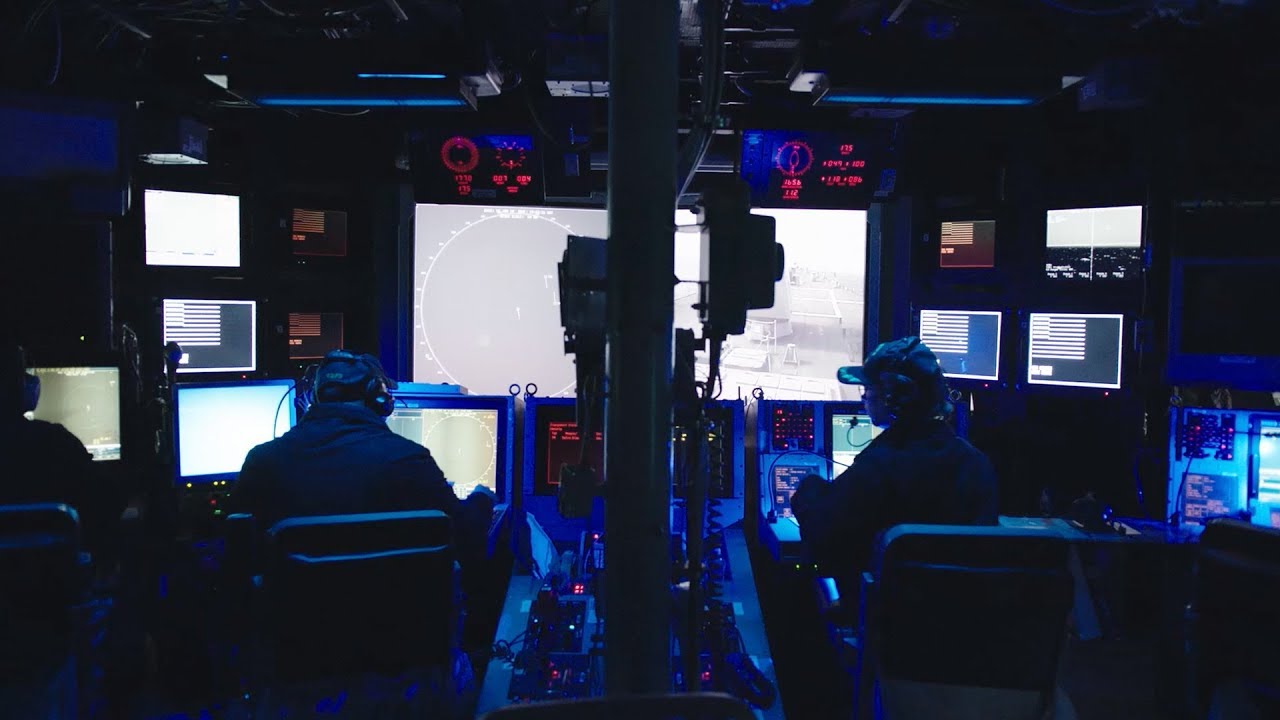What to Expect
More Information
Responsibilities
Information Systems Technicians manage communication operations and networks aboard Navy vessels, and play a vital role in everything from electronic mail systems to special intelligence and information warfare systems. There are two types of Information Systems Technicians depending on whether you choose to serve on ships or submarines. Responsibilities may include:
INFORMATION SYSTEMS TECHNICIAN (IT)
- Establishing, monitoring and maintaining radio frequency communication systems
- Operating and maintaining global satellite telecommunications systems
- Transmitting, receiving and storing all incoming and outgoing messages
- Managing and coordinating information systems security across platforms and fleets
- Designing, installing and operating wide-area-networks, computer systems and associated devices
- Performing network system administration, maintenance and training and manage network security
- Installing applications, troubleshooting user problems and providing training and assistance with use of computer hardware and software
- Writing programs to collect and distribute data for a variety of applications
- Ensuring the proper security and handling of communications materials, systems and equipment
- Performing diagnostics and data recovery operations and maintaining logs
INFORMATION SYSTEMS TECHNICIAN SUBMARINES (ITS)
- Establishing, monitoring and maintaining radio frequency communication systems
- Operating and maintaining global satellite telecommunications systems
- Transmitting, receiving and storing all incoming and outgoing messages
- Managing and coordinating information systems security across platforms and fleets
- Designing, installing and operating wide-area-networks, computer systems and associated devices
- Performing network system administration, maintenance and training and manage network security
- Installing applications, troubleshooting user problems and providing training and assistance with use of computer hardware and software
- Writing programs to collect and distribute data for a variety of applications
- Performing diagnostics and data recovery operations, and maintain logs
- Operating and maintaining electronic equipment used for detection and tracking, communication security and cryptography and Electronic Warfare Systems
- Operating and maintaining testing and auxiliary equipment
- Ensuring the proper security and handling of communications materials, systems and equipment
Work Environment
As an IT, you are primarily stationed aboard ships at sea, while you’ll serve aboard submarines as an ITS. You will also receive shore assignments. Your typical work environment will be a clean, climate-controlled indoor space used to house electronic equipment or computers.
Training & Advancement
Upon completion of initial training at Recruit Training Command Great Lakes (known as Boot Camp), both ITS and ITs report for specialized training, including:
Class "A" Technical School (24 weeks) in Pensacola, FL (for ITs) or Groton, CT (for ITSs) for training on Microsoft, Cisco and Oracle computer software and hardware fundamentals, automatic data processing, security, and system theory and operation.
After “A” School, Information Systems Technician Submarines (ITS) will also attend submarine training:
Basic Enlisted Submarine School (8 weeks) in Groton, CT, for training in basic submarine systems. Note that this training is only for Information Systems Technician Submarines (ITS).
After completing training, ITs and ITSs will receive their first assignments. ITs may be assigned to a ship, communication station or shore station, while ITSs may be assigned to a submarine, communication station or shore station. Promotion opportunities are regularly available but competitive and based on performance.
Advanced Training
Advanced training as an Information Systems Technician may be available during later stages of your career. For those with further leadership aspirations and a college degree, Officer roles may be available, providing opportunities to lead and train others.
Post-Service Opportunities
Specialized training received and work experience gained in the course of service can lead to valuable credentialing and occupational opportunities in related fields in the civilian world, such as IT and network support, computer programming, web development, and information security.
Education Opportunities
Beyond offering access to professional credentials and certifications, Navy technical and operational training as an Information Systems Technician can translate to credit hours toward a bachelor’s or associate degree through the American Council on Education.
You may also continue your education through undergraduate degree opportunities like the Navy College Program and Tuition Assistance and the Post-9/11 GI Bill.
Qualifications & Requirements
A high-school diploma or equivalent is required to become an Enlisted Sailor and an Information Systems Technician.
Due to the sensitive nature of this role, you must be a U.S. citizen eligible for a “Top Secret” security clearance, which requires a background investigation. Immediate family members must also be U.S. citizens.
IT and ITS applicants should have good arithmetic, writing and speaking skills, and should be able to use and understand computers. You should also be able to perform detailed work, keep accurate records and work well with others as part of a team. Important physical attributes include good manual dexterity and physical strength.
ITS applicants must be willing to serve aboard submarines.
General qualifications may vary depending upon whether you’re currently serving, whether you’ve served before or whether you’ve never served before.
Part-Time Opportunities
Serving part-time as a Navy Reserve Sailor, your duties will be carried out during your scheduled drilling and training periods. During monthly drilling, Information Systems Technicians in the Navy Reserve typically work at a location close to their homes.
For annual training, you may serve anywhere in the world, including locations in the U.S., at bases overseas, or in areas where humanitarian needs are great.
Take a moment to learn more about the general roles and responsibilities of Navy Reserve Sailors.
Most of what you do in the Navy Reserve is considered training. The basic Navy Reserve commitment involves training a minimum of one weekend a month (referred to as drilling) and two weeks a year (referred to as Annual Training) – or the equivalent of that.
Information Systems Technicians in the Navy Reserve serve in an Enlisted role. Before receiving the ongoing professional training that comes with the job, initial training requirements must be met.
For current or former military Enlisted servicemembers, prior experience satisfies the initial Recruit Training requirement, so you will not need to go through Boot Camp again.
For those without prior military experience, you will need to meet the initial Recruit Training requirement by attending Boot Camp in Great Lakes, IL. This training course will prepare you for service in the Navy Reserve and count as your first Annual Training.
































































































































